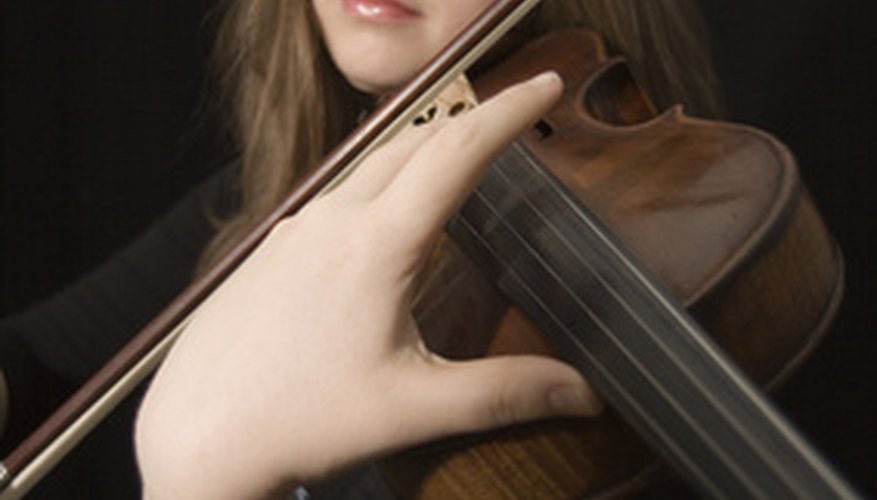Violin bows can last through several violin purchases. So, learning to identify valuable, high-quality bows is important to the violinist. The bow needs to fit comfortably in the hand and be the right length and weight for the musician. The quality of the materials that go into making the bow determine its overall quality.
- Violin bows can last through several violin purchases.
- The bow needs to fit comfortably in the hand and be the right length and weight for the musician.
Look for quality of construction. A valuable bow should be made of Brazil wood and have a deep, rich colour. The bow should also be lightweight, about 56 to 64 grams, and the shaft should be six-sided.
Check for good balance. Most valuable, high-quality bows have a whalebone or silver wrap just above the frog on the shaft for good balance. The frog is the heel where the violinist holds the bow.
- Most valuable, high-quality bows have a whalebone or silver wrap just above the frog on the shaft for good balance.
Inspect the bow for warping. Quality bows do not tend to warp over time. A bow naturally bends from the tension of the bow hairs. This is called camber and is not warping. To check for lateral warping, put the frog against the end of your nose and see if the bow bends to the left or right. A bow made of high-quality wood will not have warping.
Look into the history of the bow. Certain bow makers make a bow more valuable in today's market. Bows made by Tourte, Lupot and W. E. Hill and Sons are the most popular antique bows. W. E. Hill and Sons bows are known for little marks on the different parts of the bow to identify which employee made the part before the bow was assembled.
